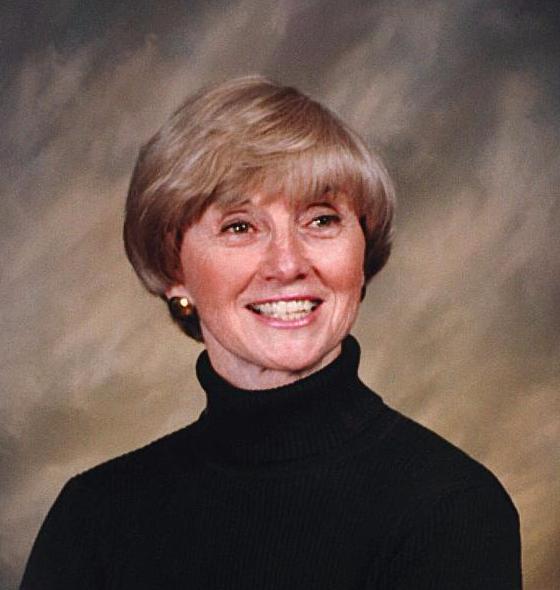Have a book manuscript in progress? Get help for your first 10 pages!
As part of our July 25-27 MWW19 conference, we’re offering six intensive, hands-on intensive sessions., one of which is Holly Miller’s Manuscript Makeover. Here’s the description:
Manuscript Makeover: All Genres – This interactive intensive is designed for those fiction and nonfiction writers who are ready to take a quantum leap forward in enhancing their writing skills. Participants will send a one-page synopsis and the first 10 pages of a book manuscript in progress. Holly will edit and critique these pages and display them to the class as a way of revealing strengths and weaknesses in the material. Additionally, she will lead the students in writing exercises and offer advice on such topics as creating strong titles and opening paragraphs, learning to self-edit, mastering proofreading, finding the right markets for manuscripts and knowing when and how to go into writing full-time. [Limit 12.]
 Author-editor Holly Miller says that books are a lot like airplanes–they’re most vulnerable to crashes during takeoff and landing. Her explanation: A story needs powerful opening pages (takeoff) and a satisfying final chapter (landing) if it’s going to convince agents, editors and readers to come along for the ride. Holly’s Manuscript Makeover intensive (July 27th) is one our most popular sessions and will focus on beginnings, endings, and everything in between. With 14 books and 2,500 magazine articles to her credit, Holly knows how to help authors chart a course that will get them closer to their anticipated destination: publication.
Author-editor Holly Miller says that books are a lot like airplanes–they’re most vulnerable to crashes during takeoff and landing. Her explanation: A story needs powerful opening pages (takeoff) and a satisfying final chapter (landing) if it’s going to convince agents, editors and readers to come along for the ride. Holly’s Manuscript Makeover intensive (July 27th) is one our most popular sessions and will focus on beginnings, endings, and everything in between. With 14 books and 2,500 magazine articles to her credit, Holly knows how to help authors chart a course that will get them closer to their anticipated destination: publication.
Do writers need to have a completed book manuscript to benefit from Manuscript Makeover?
No, all they need are a one-page synopsis and their book’s opening 10 pages. To succeed in today’s publishing world, a writer has to have two things: A compelling story to tell and the ability to tell it well. The synopsis addresses the first, and the sample pages show the second. Some writers come to Manuscript Makeover with only an idea and a rough draft of the first chapter. They want to know if they should keep writing. Others have finished their books and wonder what the next step is. Then there are the writers who have tried to market their books but with no success. They want to know where they fell short and how to fix the problem.
Why do you limit the class size to 12 writers?
For a couple of reasons. First, I want to encourage a sense of community. After all, we’re all writers even though we may be at different stages of development. Second-and this is personal-the class is really labor-intensive for me as the facilitator. I like to read each manuscript several times, adding notes, making suggestions and editing as I go. I build the class from scratch each time I teach it. I’ve found that 12 is the perfect number.
You open the class to novelists and nonfiction writers. Why not specify one or the other?
Typically, the class attracts more novelists than nonfiction authors, even though nonfiction is easier to sell these days. Regardless of the genre we choose, we’re all storytellers. We have to know how to grab and hold readers’ attention, how to build tension, create dialogue and weave in backstory. Those components need to be in every story we tell.
Where do writers get stuck most often when attempting to revise their work?
A lot of writers don’t know where to begin. In other words, they wonder at what point does the writing stop and the revising begin? Here’s what I recommend: After finishing a draft of a book, print out a hard copy but don’t look at it for three-to-five days. This is a “cooling down” period that puts some distance between the writer and the pages. When ready, read through the printed book in its entirety without a pen or pencil in hand. This is hard because the temptation is to make corrections and scribble notes in the margins. Not until a second reading do you start crossing out words and paragraphs. Line editing is easy-catching mechanical errors, misspellings, redundancies, etc. The challenge is to look at the big picture to see if you’ve over-populated your books with more characters than are necessary, or if your plot is plausible, or if your subplot kicks in at the right point. After making substantive changes to the version in your computer (always save a copy of the original!), give the manuscript another rest before you continue to tweak and fine tune it. This whole process takes at least four weeks…or more.
What are the most common mistakes that beginning writers miss when writing or rewriting a piece?
Probably the biggest mistake is thinking that revising a manuscript is a solo job. Every successful writer I know has a team of trusted readers who read the writer’s work and offer constructive feedback. (If you doubt me, check the “acknowledgements” page in many books. This is where the author thanks all the people who played a role in bringing the book to print.) Pick your readers carefully, and let them know you are open to their guidance and suggestions. That said, don’t feel obligated to incorporate all of their changes. After all, it’s your book!
Are there books or resources about revising that you highly recommend?
Writersdigest.com has several articles and a couple of good webinars that are worth checking out. One is called “How to Revise Your Manuscript: Tips from five editors.” Another of my favorite resources is the website of best-selling mystery writer Louise Penny (louisepenny.com). She has included a section called “Getting Published” that walks authors through all the steps of creating-and selling-a novel. For shorter nonfiction manuscripts, chapter 20 in a book I wrote with a colleague is called “Before you hit the send button.” This is a 20-point checklist to help writers identify possible problems in their manuscripts. The book’s title is Feature & Magazine Writing, third edition, from Wiley-Blackwell publishers.

